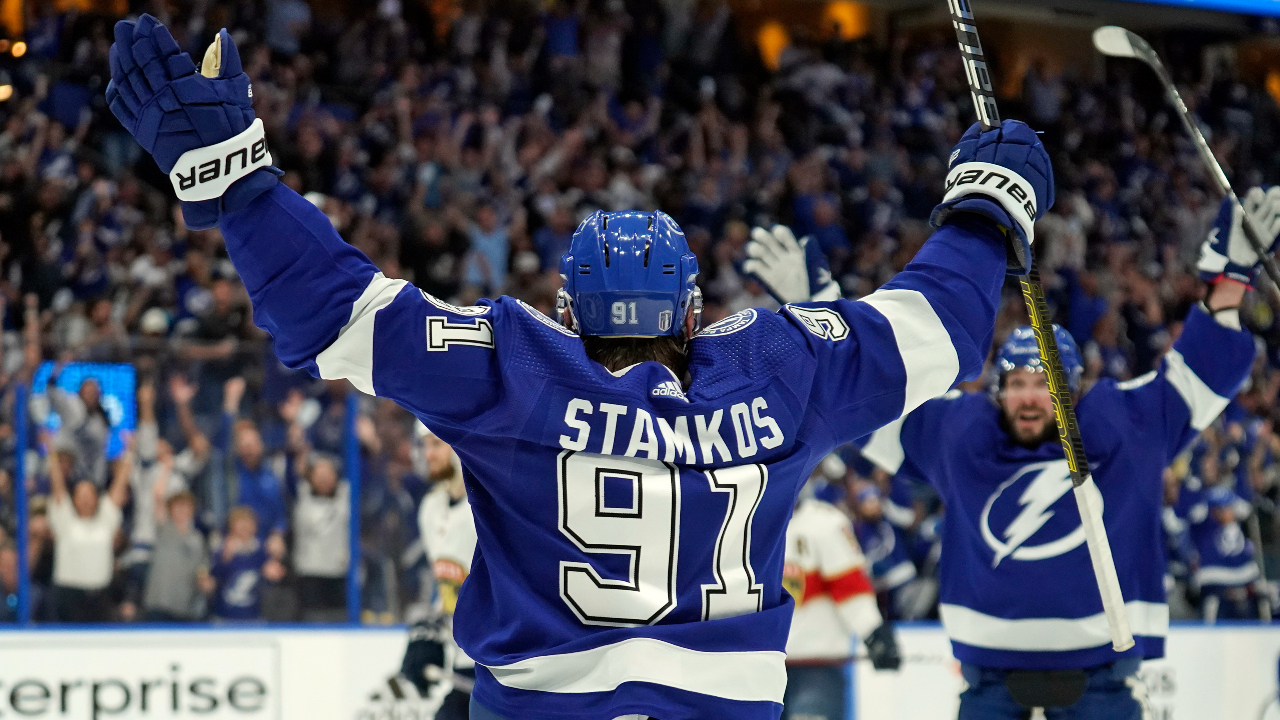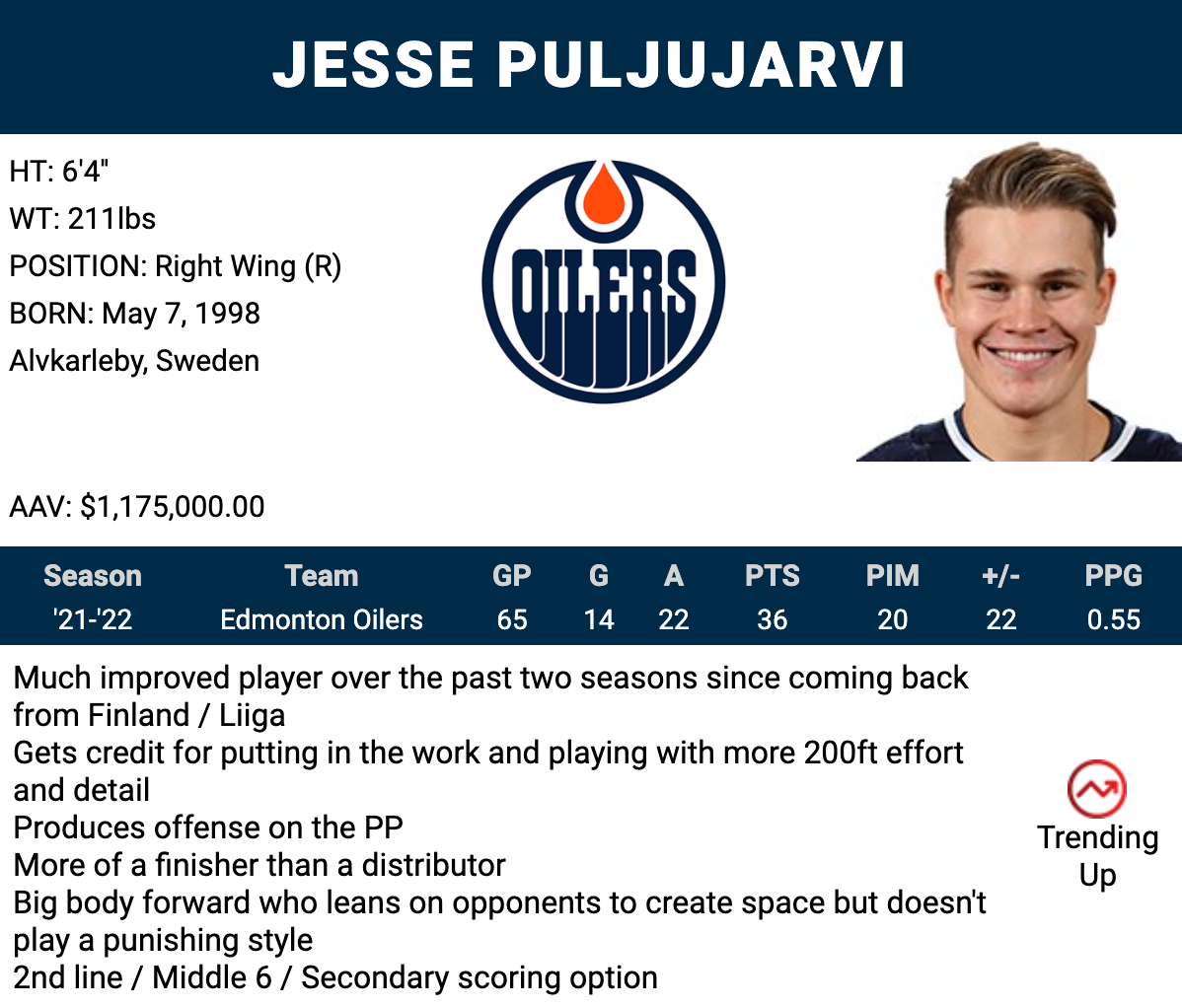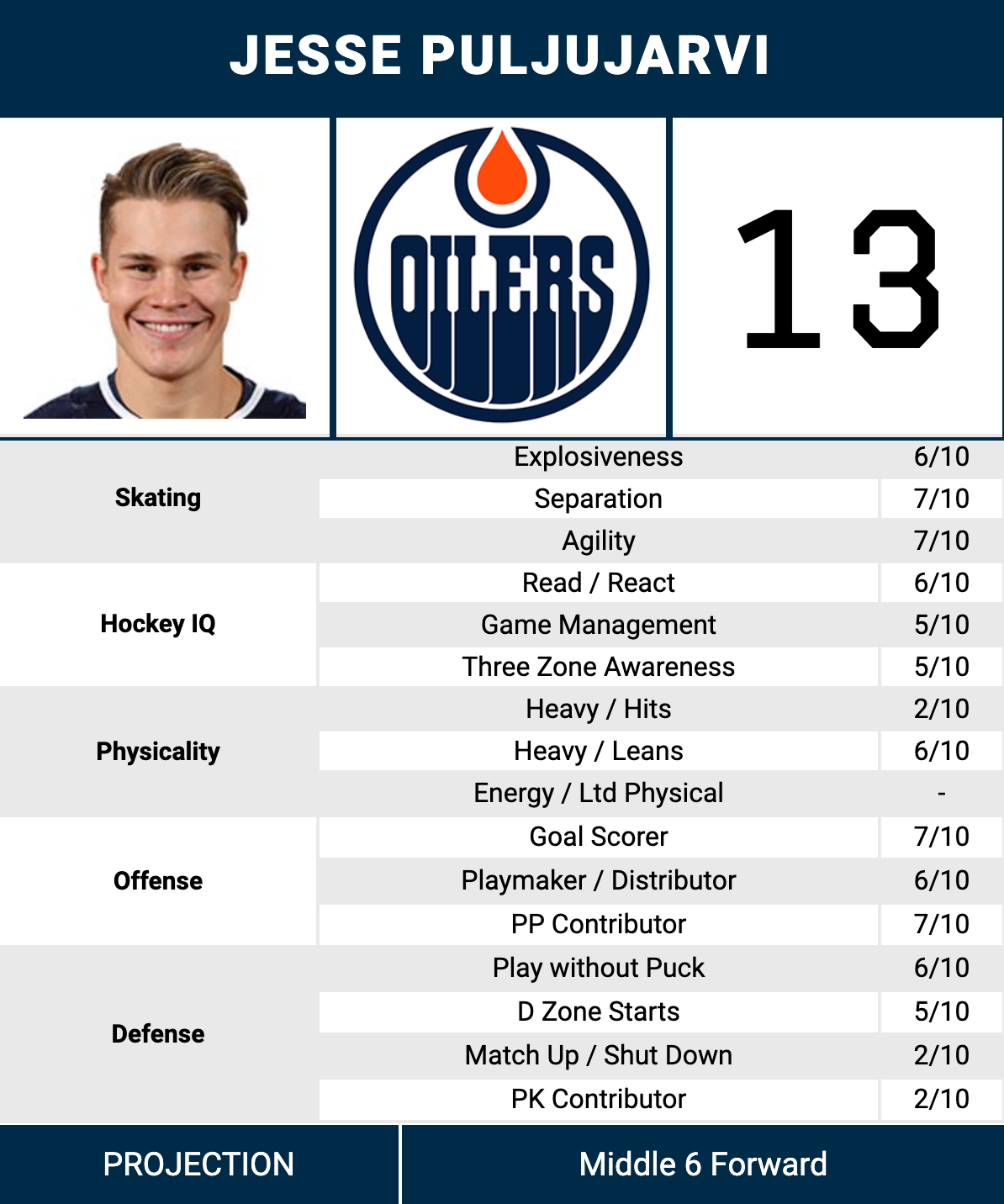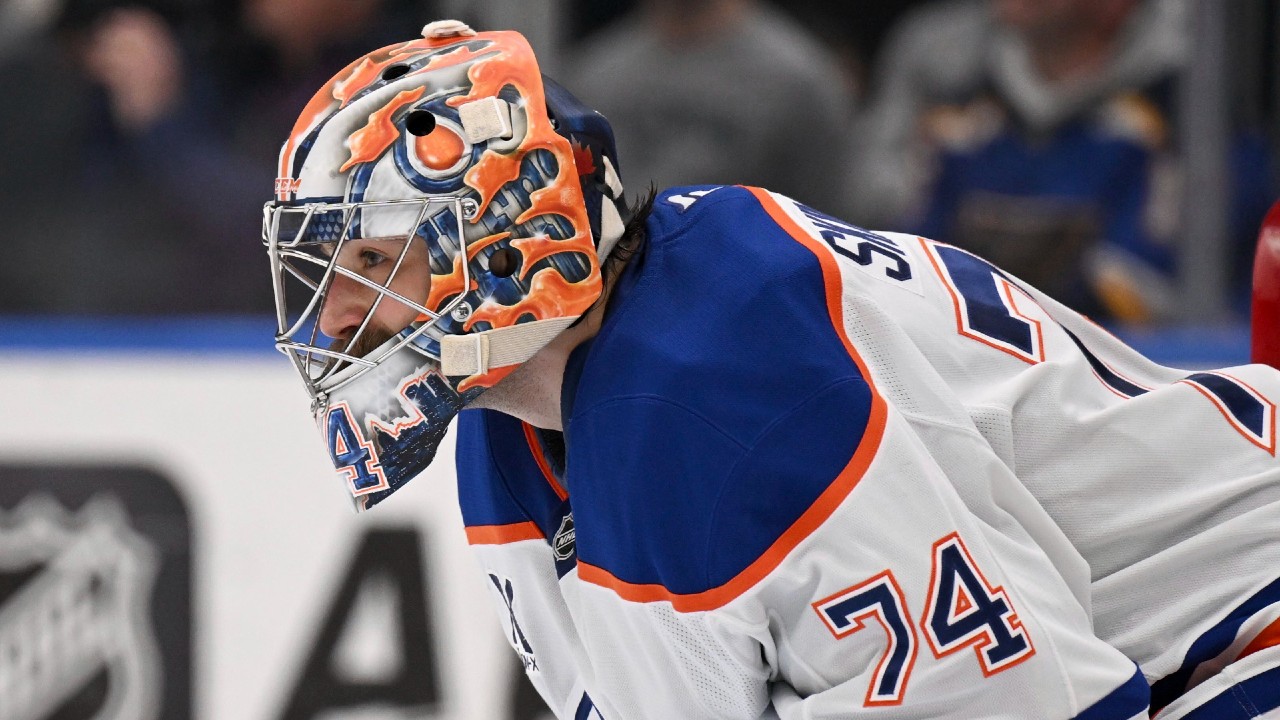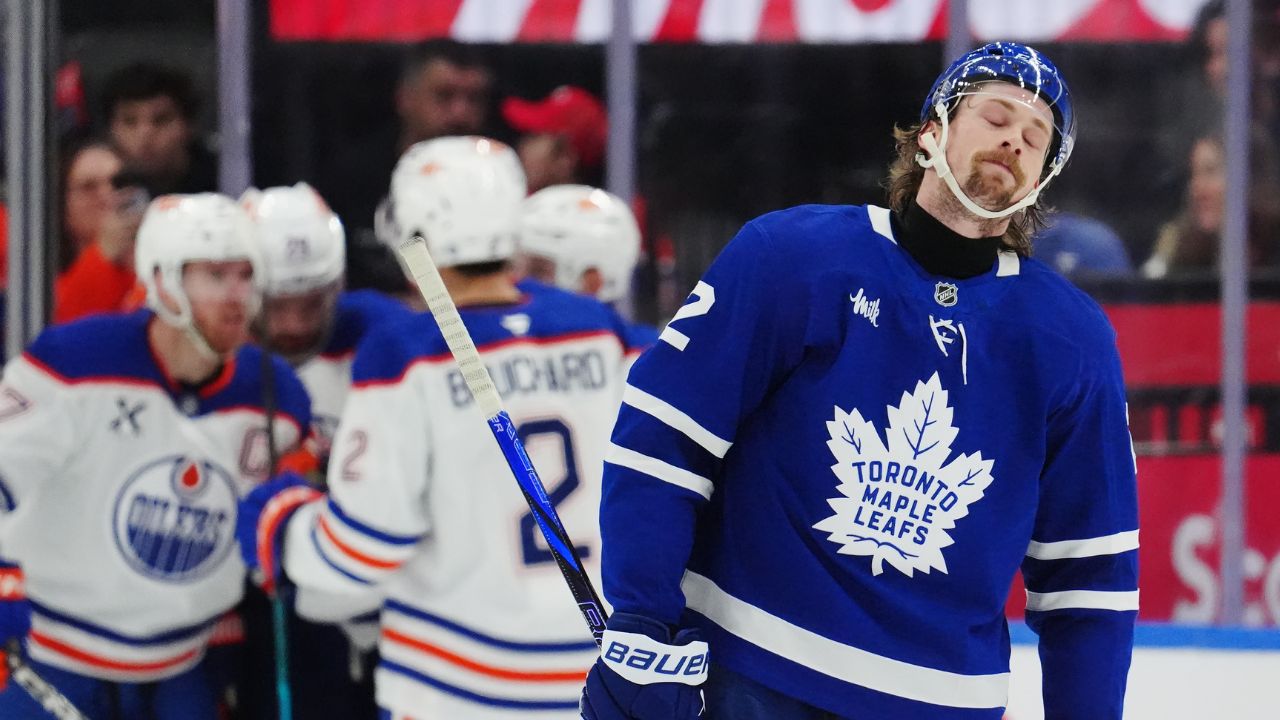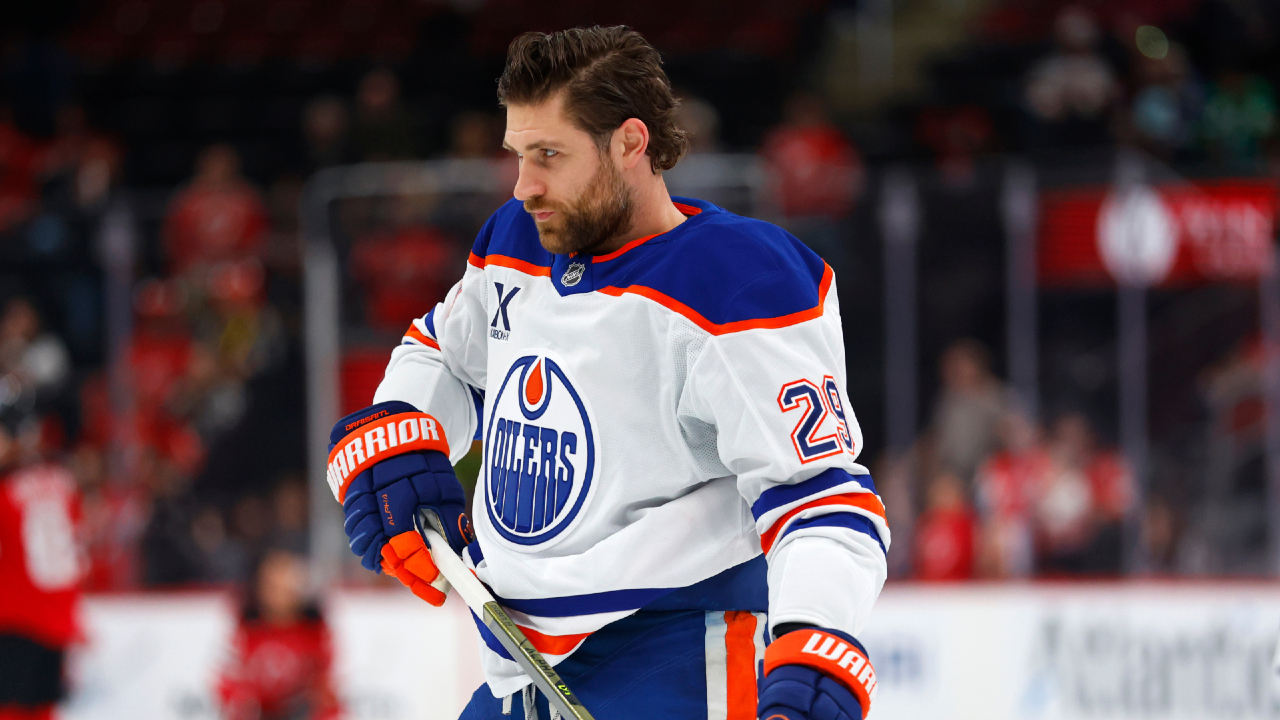
EDMONTON — As a team goes from playoff contender to Stanley Cup contender, the criteria for who gets to stay on the island gets more and more ruthless.
On the way up, nice guys and good dressing room guys are more important. Once you’re there, it’s about who can help on the ice — period.
For example: The Edmonton Oilers could not have asked any more from Mikko Koskinen, a well-liked teammate who carried them through Mike Smith’s injuries to keep the team afloat. But the expiration of his ridiculous contract and the $4.5 million that goes away with it is cause for celebration — no matter how much you liked the teammate who signed it.
Zack Kassian? A good team guy who did some nice things in the playoffs. But with two years left at $3.2 million for a fourth-line winger, that contract is an anchor, plain and simple.
Which brings us to Edmonton’s most polarizing player, Jesse Puljujarvi, a pending restricted free agent.
“I’ve got to sort out Jesse,” Ken Holland said in his post-season media address.
“Is he part of the solution?” asked veteran scribe Jim Matheson.
“That’s what I’ve got to sort out,” answered Holland.
So, let’s go down that road, shall we, on a player who divides a fan base like few others, pitting analytics believers against the eye-test media types like cat versus dog.
It’s best to start these things with areas we can agree on:
Puljujarvi is just 24, so he has a year before entering what hockey people traditionally consider his prime years. When the term “potential” begins to lose its effect, at least with the team that drafted him at age 18.
He is six-foot-four, 210 lbs., skates above average, and has an above average but not particularly accurate wrist shot.
He has worked hard to improve his all-around game over the last two seasons – he is not a defensive liability. But Puljujarvi played two-thirds of his minutes last season on a line with Connor McDavid and has just 14 goals and 36 points. In his final 52 games – including playoffs, where he was mostly off of McDavid’s line, Puljujarvi had six goals.
So, as he approaches his prime, Puljujarvi skews as a Middle 6 winger and a support scorer. Not the top line right-winger envisioned when he was drafted, his comparables have shifted from Mikko Rantanen to Valeri Nichushkin.
Fair so far? OK.
An RFA, Puljujarvi needs to be qualified at $1.4 million, a reasonable number for a player who scored 14 goals this past season, 15 the year before, and is believed to still be ascending as a prospect.
Puljujarvi is a physical clone of Colorado’s Nichushkin, a 10th overall draft pick that the Dallas Stars gave up on at age 24 — Puljujarvi’s current age. Three seasons later, in his 26- and 27-year-old season, Nichushkin “popped,” scoring 25 goals, with five more in these playoffs.
Here’s where we cross from agreed-upon facts into hoped-for facts. Kind of like “expected goals” and “actual goals.”
Is Puljujarvi, like Nichushkin, simply a late bloomer? Well, he has been a slow developer: at age 20 he played like an 18-year-old; at 22, he looked like he was 20, etc.
This, in the opinion of myself and many NHL scouts I have spoken with, is due to a “hockey sense” issue. Puljujarvi’s hockey sense is not high, certainly to those who subscribe to the eye test.
In the now, however, the fear is that Puljujarvi and agent Markus Lehto might take his contract to arbitration. Although his actual stats do not provide a strong case, Puljujarvi’s analytics paint a picture of a far more effective player.
Strong underlying numbers — zone exits, team success while he’s on the ice, how players perform with/without him — can be a sign of what’s to come. Our Sportlogiq analytics expert, Shayna Goldman, points to Jack Hughes, whose analytics in Year 2 with New Jersey preceded a breakout in Year 3.
But remember: There are hundreds of players who post modest numbers as younger players but never improve substantially. Nichushkin and Hughes are both examples of the positive, but they are in the minority, vastly outnumbered by the unnamed negatives who never “pop.”
At $1.4 million, Puljujarvi is being paid commensurate to his input to the team, and Edmonton retains the asset in case he “pops” like Nichushkin did. But they may also be looking at him as a Bottom 6 player now, and questioning whether this is the player they want in that role, as the Oilers enter the 2022-23 season as a Cup contender for the first time in ages.
OK – so Puljujarvi is not the offensive player everyone expected at No. 4 back in 2016. Neither was Erik Gudbranson (No. 3 in 2010), Adam Larsson (No. 4 in 2011), Sam Bennett (No. 4 in 2014), or Zach Bogosian (No. 3 in ’08).
But all those players are solid NHLers who could play 1,000 games. They help their teams win — just not the way we thought they would on draft day.
But they also moved on from the team that drafted them, and found their way in a second organization.
My take: I’d like to retain this player in hopes that he “pops,” if I were Holland. I would be offering a one-year “prove yourself” deal, however.
If he threatens arbitration, I would shop him and gauge a market that is not bullish on this player, to my understanding.
If I could use Puljujarvi in a deal to land the right goaltender, I would trade him.
And I would wish him luck on his second team, often the perfect remedy for a stalled NHL prospect.


